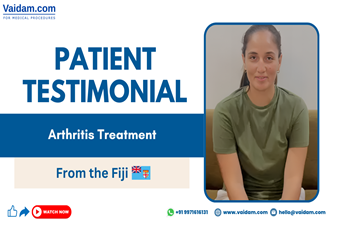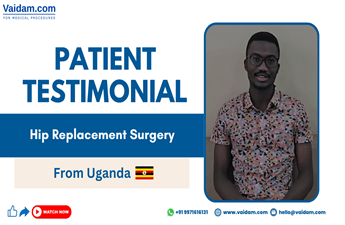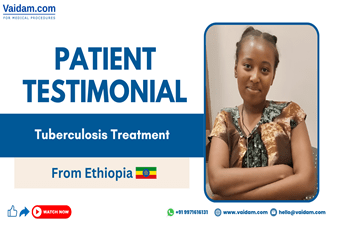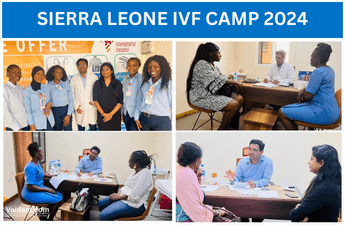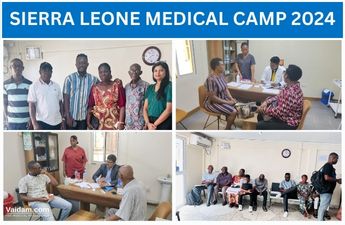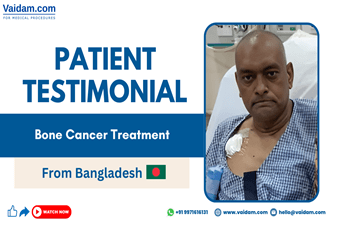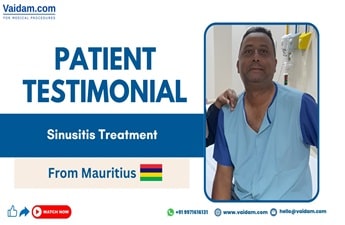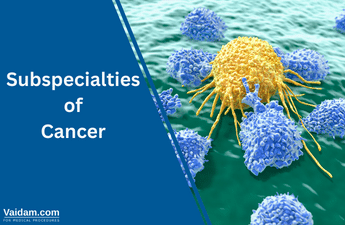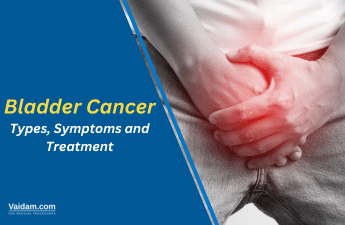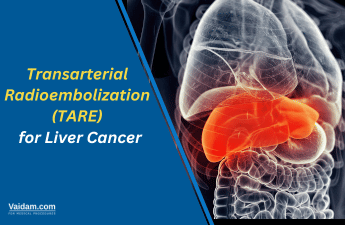
Today, one of the main goals of medical research is the development of effective methods for cancer treatment. The introduction of innovative approaches to cancer treatment is conducted at specialized clinics in the country with a high level of healthcare. Germany is considered one of the most developed countries in Europe, and healthcare is provided at an exceptionally high level compared to other countries.
Thousands of patients from all over the world visit Germany searching for better medical care. The German healthcare system ranks among the best globally. It is one of the five countries carrying out the greatest clinical investigations. The German government spends more than 300 billion euros on health care annually. Therefore, health care has outstanding results. Foreign patients receive high-quality medical care here. The high treatment effectiveness in German hospitals is confirmed even though the country ranks first in Europe regarding human life expectancy.
The cost of bone cancer treatment in Germany is USD 6300 to USD 7700.
Get in Touch with Medical Experts
What is Bone Cancer?
Bone cancer is the term for cancers that develop in the bones. The cancer cells growing in a bone can harm normal bone tissue. The type of cell and tissue where cancer begins determines the type of bone cancer.
When cancer develops in the bone, it is known as primary bone cancer. However, tumors can also originate in other body parts and spread to the bones, known as secondary or metastatic bone cancers. Lung, breast, and prostate cancers are the most common tumors that spread to the bones.
Primary Bone Cancers

Primary bone cancers are also known as bone sarcomas. Sarcomas are cancers that start in muscle, bone, fibrous tissue, blood vessels, fat tissue, and other tissues. They can develop anywhere in the body. There are many kinds of primary bone cancer. Some are rare.
Osteosarcoma (Osteogenic Sarcoma)
- The most common type of primary bone cancer.
- Starts in the early form of bone cells.
- It is rare in middle-aged people and is more common in males than females.
- Often develop in the bones of the arms, legs, or pelvis.
Ewing Tumor (Ewing Sarcoma)
- The second most common type of primary bone cancer in children, teens, and young adults and the third most common type of bone cancer overall.
- Rare in adults older than 30.
- Most Ewing tumors develop in bones but can start in other organs and tissues.
- Most common sites for this cancer are the hip (pelvic) bones, bones in the chest wall (such as the ribs or shoulder blades), bones of the spine, and long bones of the legs.
Chondrosarcoma
- Starts in the early forms of cartilage cells.
- Second most common primary bone cancer.
- Rare in people younger than 20, and the risk increases as people age.
- Most develop in bones like the pelvic (hip) bones, legs, or arms. Some start in the trachea, larynx, chest wall, shoulder blades, ribs, or skull.
High-Grade Undifferentiated Pleomorphic Sarcoma (UPS) of Bone [Malignant Fibrous Histiocytoma (MFH) of Bone]
- Often starts in soft tissues (connective tissues such as ligaments, tendons, fat, and muscle).
- Rare in bones but usually affects the legs (often around the knees) or arms when it does occur.
- Most often occurs in middle-aged adults and older people but is rare in children.
- Tends to grow locally, but sometimes can spread to distant body parts like the lungs.
Fibrosarcoma of Bone
- Develops more often in soft tissues than in bones.
- Usually occurs in middle-aged adults.
- Bones in the legs, arms, and jaw are most often affected.
Giant Cell Tumor of Bone
- This primary bone tumor type can be benign (more common) or malignant.
- Most common in people in their 20s and 30s.
- Typically affect the legs (usually near the knees) or arms.
Chordoma
- An uncommon type of bone tumor occurs in the bones of the spine, most often at the bottom of the spine (sacrum) or the base of the skull.
- Develops most often in adults older than 30.
- It is about twice as common in men as in women. Rarely it can develop in children, as well.
- They often go to the lymph nodes, lungs, or liver if they spread.
Other Cancers That Develop in Bones
Some other cancers develop in the bones but don't start in the actual bone cells. These cancers start in early forms of blood cells or immune cells in the bone marrow (the soft inner part of some bones). These include:
- In Multiple Myeloma, many tumors develop in the bones, but it's not a primary bone cancer because it starts in plasma cells in the bone marrow. Sometimes, myeloma can be found as a single tumor in a bone, but most often, it has spread to other bones, so it's treated as a widespread disease.
- Leukemias starts in the blood-forming cells of the bone marrow, not in the bone itself. There are many types of leukemia. Most of these are cancers of early forms of white blood cells, but they can also start in other types of blood cells.
- Non-Hodgkin lymphomas start in early forms of white blood cells called lymphocytes. These cancers often develop in lymph nodes or other body parts containing lymph tissue. But in rare cases, lymphoma can appear first in the bones. This is known as a primary non-Hodgkin lymphoma of bone (PLB). It can affect one or many bones.
What are some Common Bone Cancer Symptoms?

Bone cancer can present as a painless lump for some individuals, while others may experience various symptoms. However, it is essential to note that these symptoms may also be caused by other conditions like arthritis or Lyme disease, which may lead to a delayed diagnosis.
Some common symptoms of bone cancer are:
- Pain (usually worse at night)
- Unexplained swelling
- Difficulty moving around
- Feeling extra tired (fatigue)
- Fever
What are the Treatment Options Available for Bone Cancer?
Treatment for bone cancer depends on your type of bone cancer, how far it has spread, and your general health. The main treatments are surgery, radiation therapy, and chemotherapy.
Surgery
- Limb-salvage (limb-sparing) surgery: removing cancer and some surrounding normal tissue but leaving the limb intact
- Amputation: removing cancer and all or part of an arm or leg
Chemotherapy
There are four ways chemotherapy can be used to treat bone cancer:
- Chemotherapy before surgery helps shrink the tumor and makes surgery easier. This approach works particularly well in treating Ewing sarcoma when combined with radiotherapy before surgery (chemoradiation).
- Chemotherapy after surgery prevents cancer from returning to control symptoms in cases where a cure is not possible (known as palliative chemotherapy).
Radiation Therapy
As with chemotherapy, radiotherapy can be used before and after surgery to treat bone cancer or control the symptoms and slow the spread of cancer when a cure is not possible.
Innovative Techniques of Bone Cancer Treatment in Germany
German scientific centers, which are world-renowned universities, research the effectiveness of innovative bone cancer treatment techniques. Therapeutic approaches developed in other prosperous countries are implemented here as well. Therefore, Germany is one of the most sought-after states for medical tourists suffering from oncology.
German hospitals offer the following methods of bone cancer treatment:
-
Radioembolization combines blood vessels that feed the tumor occlusion and ionizing radiation. In contrast to standard radiotherapy, where the whole body is exposed to radiation, radioembolization to arteries carrying blood to the tumor results in micro particles that clog the lumen of the vessels and release radioactive isotopes. Their disintegration causes local irradiation of the tumor tissue in large doses without much harm to the body as a whole. Microparticles are made of glass and polymers, and the radioisotope used for treatment is the isotope yttrium Y-90.
-
Chemoembolization is a method of treatment where the side effects of chemotherapy are minimized due to the drug's local effect on the tumor. The general principle of treatment is similar to that of radioembolization. As a difference, the embolus that closes the vessels feeding the tumor releases chemotherapy drugs. The advantages include the ability to affect the tumor with large doses of drugs, less toxic effect on the body, and creating conditions for oxygen deficiency and nutrients for neoplasm tissues.
-
IRE-resection is an innovative technology called the "nano-knife," which significantly reduces the risk of tumor growth recurrence and gently cuts the healthy tissues. This intervention helps define the "tumor-healthy tissue" boundary at a cellular level. IRE-resection can be considered one of the most accurate ways to exercise new growth with invasive growth, distinguishing all types of cancer.
-
Proton therapy is a whole system of targeted radiotherapy. Proton therapy impacts a tumor locally thanks to precise stereotactic targeting. Besides, proton therapy is effective regardless of what part of the body the malformation is located in. The method helps to irradiate even the tumors in hard-to-access places. The patient's healthy tissues are not suffering as protons release the bigger part of their energy only after they reach the target.
-
Based on local radiotherapy, Brachytherapy is one of the most effective and sparing ways to treat cancer. Small capsules with a radioactive substance (1.5-2 mm) are introduced into the affected area, which is a constant source of ionizing radiation. This treatment promises to achieve good results in some forms of bone cancer.
-
Immunotherapy assumes the introduction of anti-tumor monoclonal antibodies or cytokines, which are natural biologically active substances present in the body and do not harm it. A tumor tissue biopsy is performed on each patient to prepare specific immunoglobulins. In some immunotherapy regimens, the collection of cells from donors is also performed, which is necessary for obtaining the vaccine. The drug is necessarily filtered before administration, and the separated immunoglobulins are introduced into the patient's bloodstream to show anti-tumor activity.
Advantages of Getting a Cancer Treatment in Germany
- Highly qualified doctors
- Standardized approaches for the provision of medical care
- Excellent equipment in most German hospitals
- High diagnostic accuracy
- The availability of modern treatment methods which are limited in other countries
- Continuous development and implementation of innovations allow significant treatment success in even the most severe diseases
- High-quality postoperative care and rehabilitation
- Comfortable living conditions for patients
- Well-performed anesthesia and symptomatic treatment
Leading Hospitals in Germany Providing Treatment of Bone Cancer
- University Hospital Rechts der Isar: The hospital offers a complete treatment spectrum for bone and soft tissue tumors of all age groups. They use Minimally invasive surgical techniques for tumor surgeries.
- Ludwig Maximilian University Hospital, Munich: The hospital is dedicated to upholding the highest global standards in research and education. They have received various accolades and certifications, such as the ISO 9001:2015 certification, IQM quality management certification, and an award from German health insurance providers for their exceptional service and quality.
- Meoclinic Hospital, Berlin: The hospital is certified by the ISO 9001:2008 quality standard and meets the highest medical requirements of the European Union. The center has the latest equipment, including the newest devices for CT and MRI scans, Doppler ultrasonography, EEG, and devices for conducting duplex 3D and 4D sonography.
- Nordwest Hospital, Frankfurt: The hospital is certified by ISO: 9001 ensuring a high level of service and quality of the European Union. For more than 25 years, Nordwest Clinic has been engaged in clinical studies of new immunotherapy products to improve the compatibility and effectiveness of cancer treatment methods every year.
Conclusion
Although rare, being diagnosed with bone cancer can be a scary and uncertain experience. Early detection and treatment increases the chances of successful outcomes. It is important to discuss your treatment options with your healthcare provider. Additionally, joining a support group may be helpful for your mental, emotional, and spiritual well-being as you connect with others going through a similar experience.
Getting bone cancer treatment in Germany is advantageous due to the availability of innovative therapies, the most advanced treatment regimens, and the new modern and safe drugs.



